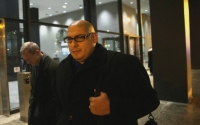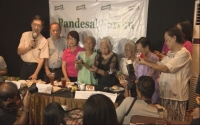Fukushima fallout

On Friday, November 8 at 7:30pm EST:
The Fukushima region of Japan remains one of the most radioactive places on earth with a clean-up plan of 40-plus years. More than 160,000 evacuees still live in temporary housing. Scores of children who were not evacuated are being diagnosed with thyroid cysts. Meanwhile, the Japanese government is telling many evacuees to return and residents to remain. But is it really safe and how about for the rest of the world?
On this episode of the The Stream, we'll speak to:
Mariko Bender @WNSCR
Co-founder, World Network for Saving Children from Radiation
save-children-from-radiation.org
Dr. Helen Caldicott @DrHCaldicott
Founder, Nuclear Free Planet
nuclearfreeplanet.org
Dr. Robert Peter Gale, MD, PhD
Radiation Expert
robertgalemd.com
What do you think? Record a video comment or leave your thoughts in the comments below.
Radiation is leaking from the Fukushima Daiichi plant at a record-breaking rate, more than a fifth higher than levels since the meltdown in March 2011. Meanwhile, around 1,600 evacuees have died in the evacuation process.
The significance of the high levels of radiation is being debated. Some argue the increased levels are dangerous, while others are less concerned about the effects of the radiation, pointing out that radioactive water from Fukushima is leaking at an equivalent rate of 76 million bananas per hour.
However, many, including citizen watchdog group Safecast, blame the government and the media for lack of transparency with regards to the radiation levels, which have spread to surrounding areas. Originally published in the Asahi Shimbun, this graphic shows the permeation of iodine radiation in the region.












Error
Sorry, your comment was not saved due to a technical problem. Please try again later or using a different browser.